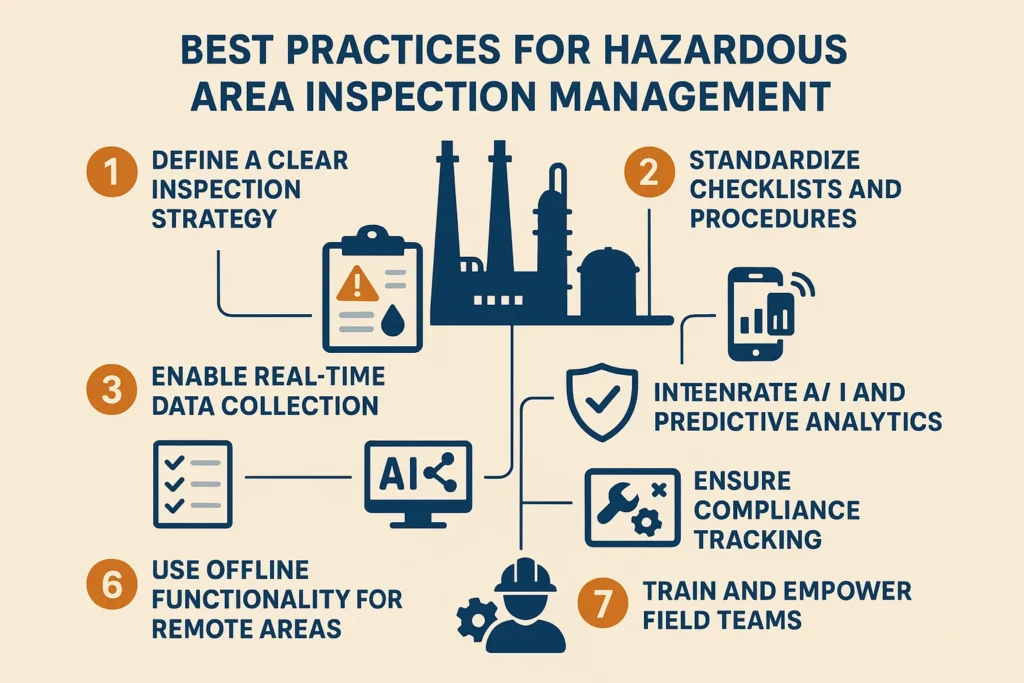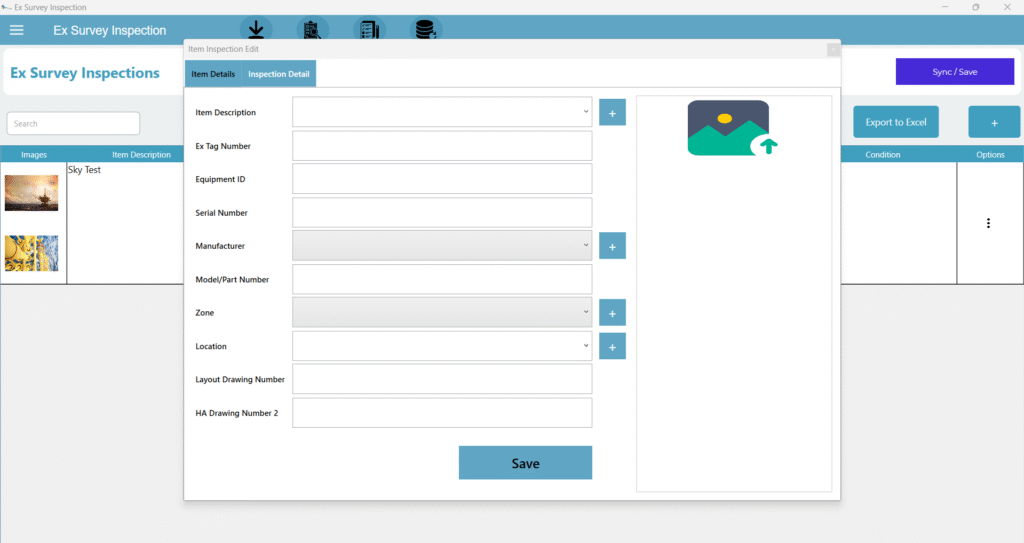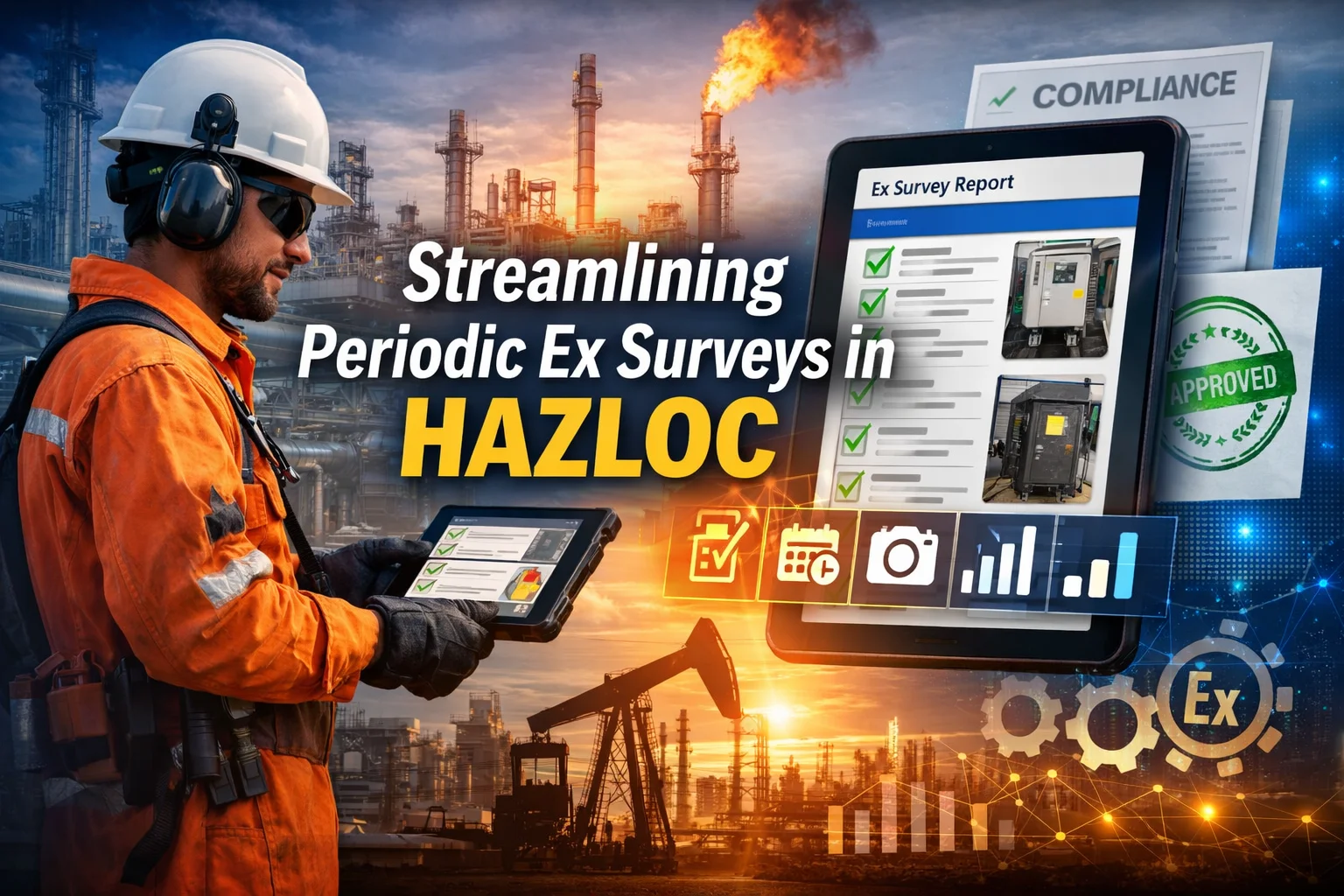Inspections Track Software For Oil and Gas Inspection Industry

In the oil and gas industry, hazardous area inspections are critical to ensuring operational safety, regulatory compliance, and equipment reliability. Since these environments often contain flammable gases, vapors, or dust, even the smallest oversight can lead to catastrophic incidents.
This article explores best practices for managing hazardous area inspections, focusing on how digital tools like Inspections Track Software streamline inspection processes and enhance safety outcomes.
Hazardous areas in oil and gas facilities are typically classified as Zone 0, Zone 1, or Zone 2, depending on the frequency and duration of explosive gas presence. Regular inspections in these zones help companies:
Proper management of inspections not only minimizes risks but also reduces downtime and operational costs.
Despite their importance, inspections in hazardous zones come with challenges such as:
| Challenge | Impact | Solution |
|---|---|---|
| Manual data recording | Inconsistent and error-prone reporting | Use digital inspection platforms |
| Lack of real-time visibility | Delayed response to safety threats | Implement IoT-based monitoring |
| Poor document control | Difficulty in audits | Centralize reports with cloud storage |
| Limited offline functionality | Inefficiency in remote sites | Use software with online/offline sync |
Transitioning from manual to digital inspection systems helps overcome these barriers and establishes a proactive approach to safety management.
Adopting a structured and technology-driven inspection process is the cornerstone of safety excellence. Here are some industry-proven best practices:

Establish inspection intervals based on asset criticality and environmental risk.
Use a risk-based inspection (RBI) approach to prioritize high-risk zones.
Consistency is key. Develop customized digital checklists that comply with IEC or ATEX standards. This ensures every asset is evaluated using the same parameters.
Move beyond paper-based inspections. Mobile and tablet-based data entry ensures accuracy and real-time visibility of safety performance indicators.
Leverage AI-driven insights to detect trends, predict potential failures, and optimize maintenance schedules before breakdowns occur.
Automated compliance alerts and digital record-keeping make it easy to pass audits and demonstrate adherence to safety regulations.
Many oil and gas facilities operate in locations with poor connectivity. Use software that supports offline data capture and auto-sync once online.
Effective inspections rely on trained personnel. Regular training sessions and access to digital inspection manuals enhance team performance.
Inspections Track Software provides an all-in-one platform designed specifically for the oil and gas inspection industry. It simplifies and automates every step of hazardous area inspections—from scheduling and execution to reporting and analytics.

By integrating Inspections Track Software, companies can ensure safer operations, improved decision-making, and faster compliance documentation.
Switching to a digital inspection system like Inspections Track offers measurable improvements:
| Benefit | Description |
|---|---|
| Improved Safety | Early detection of faults and hazards |
| Enhanced Efficiency | Reduced paperwork and faster reporting |
| Data Accuracy | Real-time validation and standardized formats |
| Cost Savings | Minimized downtime and optimized maintenance |
| Audit Readiness | Centralized records simplify compliance audits |
The future lies in data-driven inspections supported by IoT, AI, and cloud technology. Automated alerts, drone-based assessments, and predictive analytics are redefining how safety inspections are conducted.
Companies that adopt digital inspection management now will be better positioned to handle the complexities of industrial safety in the coming decade.
Effective management of hazardous area inspections is essential for maintaining safety, reliability, and compliance in the oil and gas sector. Implementing best practices and leveraging technology ensures inspections are accurate, timely, and risk-free.
With solutions like Inspections Track Software, oil and gas companies can transform their inspection workflows—ensuring operational excellence while prioritizing safety at every step.
read more : strict definitions of oil and gas explained
The goal is to identify and mitigate potential risks that could lead to fire, explosion, or equipment failure in classified hazardous zones.
Frequency depends on risk level and regulatory standards, but most critical assets require quarterly or annual inspections.
Yes, with tools like Inspections Track Software, inspectors can perform and record inspections offline, syncing data once an internet connection is available.

Deepwater oil and gas operations face some of the most demanding inspection challenges in the energy sector. Extreme depths, high pressure, limited visibility, and safety risks make traditional inspection methods slow, costly, and hazardous.As a…

Periodic Ex surveys in HAZLOC (Hazardous Locations) are a critical requirement for oil & gas facilities. They help ensure that electrical and mechanical equipment installed in explosive atmospheres remains safe, compliant, and fit for operation….
SkySoft Connections provides quality IT services around the globe. Our services begin with experience and end with dedication, ensuring innovation and reliability
© Copyrights, 2024 All Rights Reserved Skysoftconnections
Contact us
Get notified about new articles
Comment (1)
Digital Thickness Gauge for Buried Pipe - inspectiontrack
Oct 27, 2025[…] Read more : best practices for hazardous area inspections in oil and gas […]
Comments are closed.